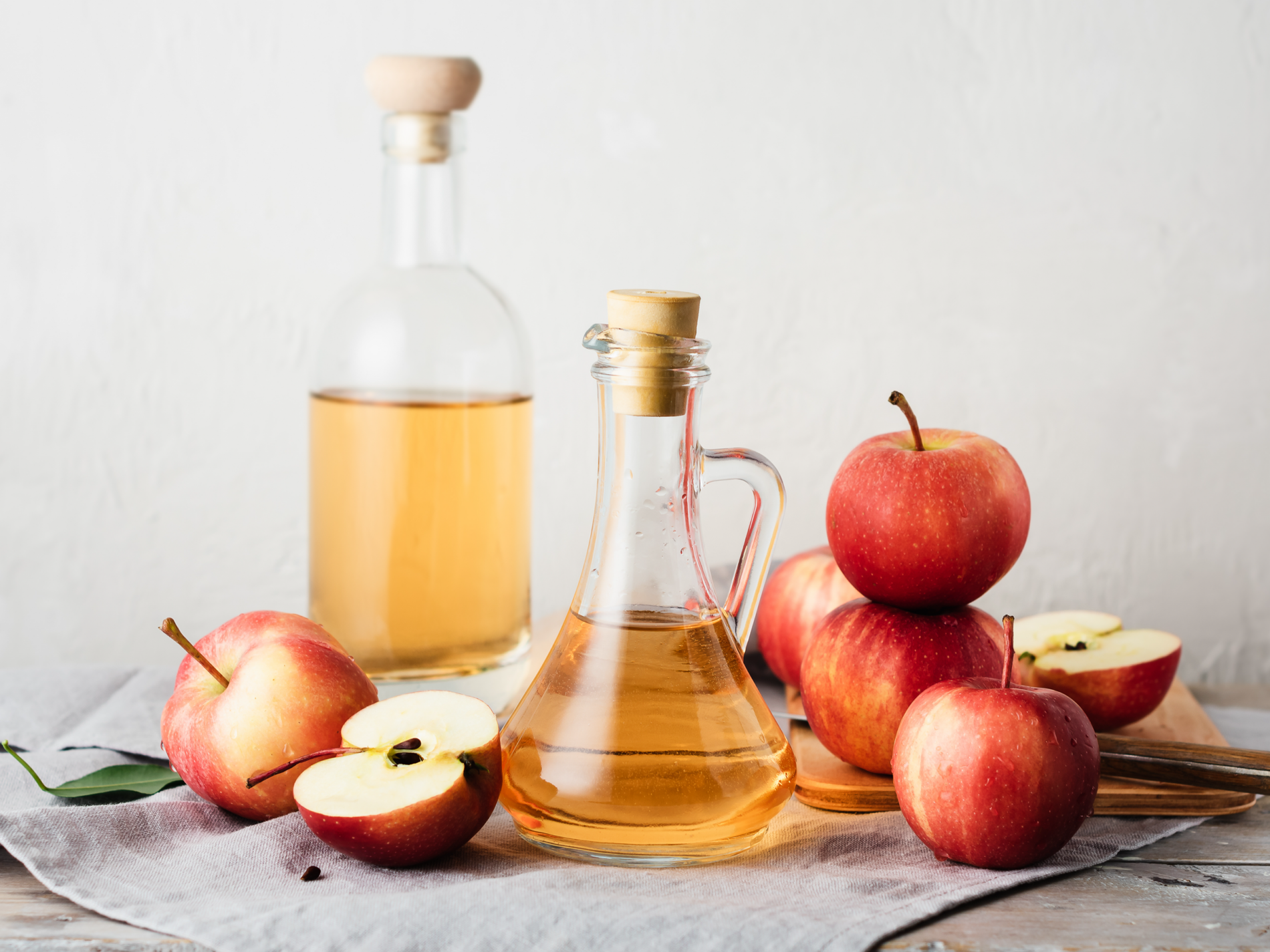As the name suggests, apple cider vinegar comes from apples left in the water to ferment. As bacteria work their way through sugar, alcohol is created.
In turn, alcohol is affected by more bacteria, turning it into acetic acid. In other words, apple cider vinegar is an apple wine gone sour. And the word vinegar comes from Latin and literally means “sour wine”.
Apple cider vinegar has been known for thousands of years
Our ancestors have used apple cider vinegar for thousands of years. Various archeological finds suggest that vinegar was known to Babylonians and Egyptians. Later it was mentioned in both Old and New Testimonies.
People have been using apple cider vinegar for cooking, pickling and preserving foods, for drinking, as well as in medicine and as a cleaning agent.
Beneficial characteristics of apple cider vinegar
Some of the beneficial properties of apple cider vinegar have been disputed. Scientifically, it is proven to be more of a myth.
However, apple cider vinegar can balance sugar in the blood. It also suppresses hunger. These claims are supported based on data obtained from research across the world.
Even if apple cider vinegar can’t cure cancer or heal wounds, it is still a fantastic ingredient for cooking. Jazz up any of your salad dressings or add it to risotto to give your dishes fruity and tart notes.
Make your own apple cider vinegar
This fruity vinegar can be ealisy made at home. All you need are apple scraps, sugar and a bit of time. Of course, you can use whole apples specially bought for the occasion. But it’s always fun to reuse something that would otherwise be wasted.
If using whole apples, cut 2-3 of them into small cubes. Place the apple pieces, including the cores and peels, into a jar and pour in 500 ml / 2-3 cups of water. Add 2 tbsp of sugar and stir.
Cover the jar tightly with a cheesecloth and a rubber band. This will allow the air to circulate yet stop insects and bacteria from rotting the apples. The apples should be submerged in water as much as possible. Leave the jar in a dark place at room temperature.
Stir the apple-water-sugar mix every other day for 2 weeks. This will promote the fermentation process and reduce the chance of apples rotting.
Once you notice bubbles and fizz appearing on the top of your jar, it’s time to remove the apples and strain the liquid.
The apples have to be discarded now. Return the cheesecloth over the jar, secure the rubber band and keep the jar in a dark place. It might take up to 6 more weeks before the apple cider vinegar is ready.
Taste the acidity of the liquid every week. If it tastes sour and vinegary, your vinegar is ready.
Alternatively, you can use pH stripes. The acidity level should be between 4 and 5. You might notice a gelatinous disc appearing on top of the liquid. This is called “mother”. Keep it in the jar and use it later to create more vinegar.
Once the vinegar is ready, secure the jar with a tight lid to stop the fermentation process. Keep it in a dark place. Homemade vinegar is good to use for at least 1 year.











What do you think?